Crash Course: How To Clean, Polish and Maintain Marble Floors

If you’ve got marble floors in your home, you know how beautiful they look when they’re freshly cleaned and polished. Your floors should last a lifetime, but despite marble’s durability, it can be prone to damage if you clean it with the wrong solution or chemicals. Learn how to take care of your marble floor and keep all your marble surfaces glossy and smooth for years to come with our comprehensive guide.
What is marble?
Under intense heat and pressure in the earth’s core, limestone breaks down and reforms into marble, which gets its beautiful appearance from the way the limestone recrystallizes. Despite the enormous forces at work creating it, marble can be surprisingly fragile. Because it’s formed from high-alkali minerals, it’s very susceptible to acid. Even spilling some cranberry sauce on an unprotected marble surface can cause it to corrode.
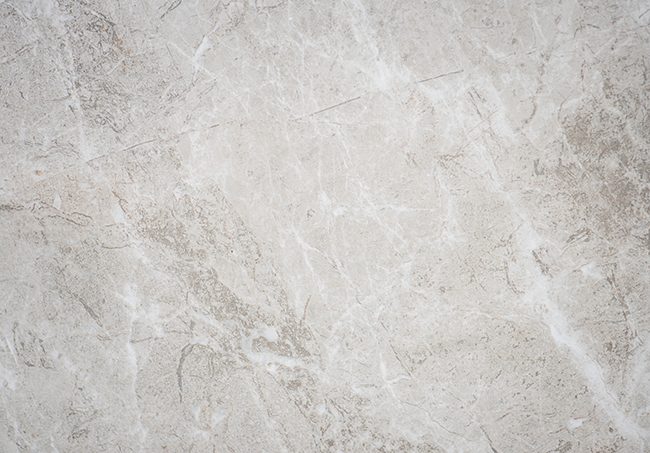
Surface corrosion eats away at marble’s smooth surface and forms what’s known as an “etch.” This might look like a stain that doesn’t shift no matter how you scrub it, but a good way to tell the difference is to remember that stains are darker than the original color, whereas etches are lighter. That’s because the etch hasn’t soaked into the surface of the marble but removed it. Etches are also easier to spot at an angle or under oblique lighting, whereas stains usually look the same no matter how you approach them.
Getting etches in your marble doesn’t mean it’s ruined forever. You can buy stone cleaning powder, buff out minor etches and scratches, or call a professional to refinish your floor if the damage is very deep.
The best way to keep your marble looking pristine is damage prevention. Learn what can and can’t harm your marble floor, and how to clean and treat it to keep it looking beautiful.
Best cleaning equipment for marble
Keep your marble floors clean and scratch-free by using the right equipment for the job. Avoid anything rough or sharp that can damage marble’s sensitive surface. Soft materials such as chamois cloths and dust mops will protect your marble better than abrasive brushes and sponges. Dry erasers are particularly inadvisable because they work by abrading surfaces to clean them.
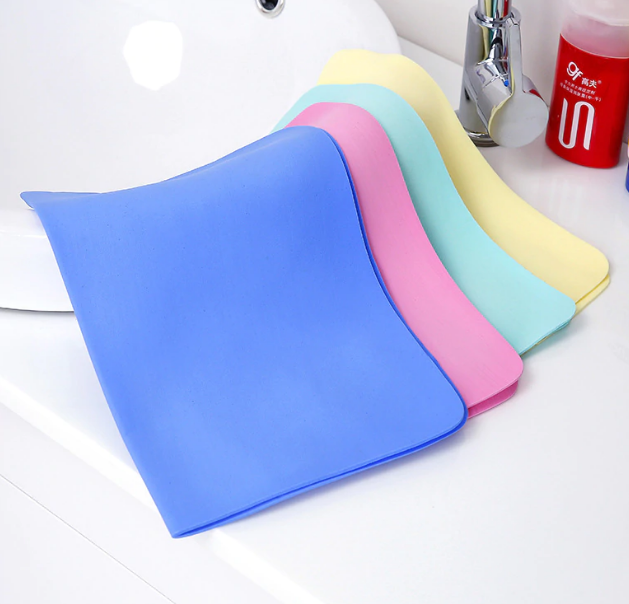
Never use vinegar, lemon juice, or other acidic cleaners on marble. Stick with alkali cleaning solutions such as ammonia and hydrogen peroxide, or neutral water, to prevent the marble from reacting or etching.
Before you begin: Remember to keep the color and exact makeup of your marble floor in mind when choosing cleaning solutions. Strong alkalis such as hydrogen peroxide and ammonia can bleach dark marble. Always test any cleaner on an inconspicuous area first. Whenever you’re cleaning marble, begin with a neutral solution such as water or a pH balanced marble cleaner, and only use stronger solutions if absolutely necessary. When you’ve finished cleaning your marble floor, always flush the area with plain water to neutralize the pH of any residual chemicals, and dry thoroughly afterwards.
How to clean a marble floor
Start cleaning your marble floors by preparing the surface thoroughly. Remove any dust or dirt carefully using a clean, dry cloth, or a soft dust mop. Don’t drag the cloth or brush hard across the surface or you run the risk of creating scratches in your floor. Even sand can scratch unfinished marble, so imagine the damage a small pebble could do. Make sure to pay particular attention to corners, doorways, and other places where dust and dirt can accumulate. Try to always brush in one direction to minimize the impact on your floor.
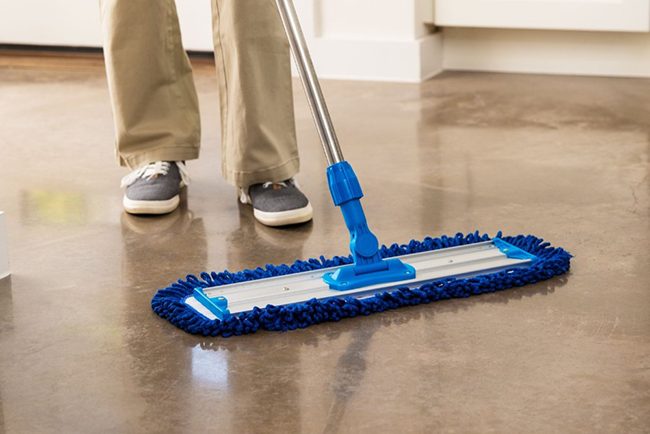
Follow the sweeping by mopping the floor to remove any final traces of dust and dirt. You can use plain water for this, or for a more thorough clean look for a gentle, non-acidic cleaner designed for use on marble surfaces. If the mop water becomes discolored, change it to prevent smearing dirt across your clean floor.
To clean the floor, use a diluted ammonia solution. Make a solution of 0.5-cup ammonia to 1 gallon of warm water. Remember ammonia has a strong odor and should only be used in well-ventilated areas. Open a window, don’t spend long in the room after applying the solution, and leave it for a couple of hours to dissipate before reentering.
Don’t soak your marble floor in cleaning solution. Wring any excess liquid from your mop or cloth before washing the floor. As soon as you’re finished, dry the floor with a soft towel to prevent watermarks or rust stains, which can be left behind on marbles that contain iron oxide when it comes into contact with water.
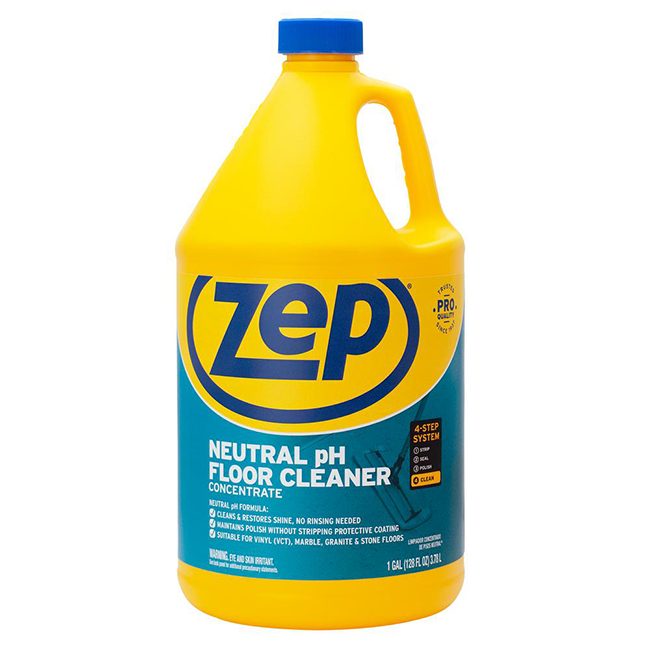
If your marble is very dirty, you can make a stronger cleaning solution by combining 2 tablespoons of ammonia with a quart of water, or mix baking soda with ammonia or hydrogen peroxide to make a paste. Apply gently and never scrub your marble or use abrasive tools like brushes or scourers, as they will only scratch the surface. Make sure to flush the area thoroughly with water after half an hour to neutralize the pH and remove every last trace of the cleaning solution.
If your marble has oily marks in it, try applying cornstarch to the stain and leave it to draw out the stain. Once finished, rinse the area with plain water and dry thoroughly to keep your marble protected.
Polishing marble floors
It’s not recommended to use polish on your marble. Not only can it damage the surface, but marble is so smooth that a polished floor can be dangerously slippery. Instead use a dry towel or chamois cloth to remove residual water or cleaners from your marble floor. If you want a higher shine on your cleaned floor, you can make a paste from 50/50 water and baking soda and spread it gently over the marble. Allow it to dry, then remove the residue with more water and a soft cloth.
Maintaining your marble floor
It’s important to take care of your marble and clean it regularly in order to keep it in its best condition. As a rule of thumb, give it a dry clean with a soft cloth or dust mop once per week for each person or pet in your household. For a single-person home, weekly sweeping should be enough. If you have two people, dust the floor twice a week. For four people and a couple of dogs, you’ll probably have to dust the floor every day. This reduces the amount of dirt that can build up on the floor and helps keep your marble free from scratches and looking good.
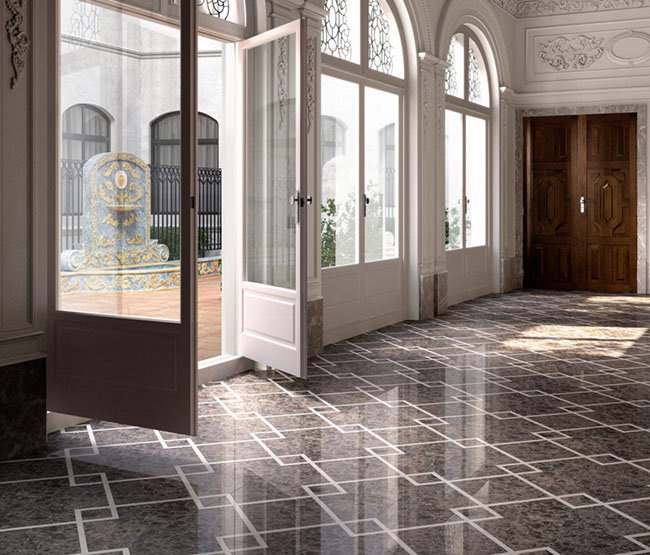
If anything spills on your marble floor, be sure to remove it immediately to prevent stains from soaking in. Marble is a porous rock, meaning it can absorb liquid, and getting marks out again can be difficult. Blot any stains, don’t rub them! Flush spills with plenty of water to neutralize the pH and reduce the chances of stains or etches. This is particularly important for acids such as tomato, citrus, vinegar, and coffee.
In high-traffic areas, consider investing in rugs to cover and protect your marble floor.
DIY marble floor cleaners
There are many specialist marble cleaners available that are alkali or pH neutral in order to protect the surface from stains or etches. However you can still use household supplies to make DIY marble cleaners that won’t cause any damage.
Soap and water
Regular dish soap makes a good cleaner for marble floors. Use a very dilute solution in order to prevent streaks, and gently buff the floor afterward to dry it and remove any residue.
Hydrogen peroxide
Hydrogen peroxide is great for removing tough stains on light colored marble. Remember it can act as a bleaching agent and discolor dark marble, so always test an inconspicuous area first. Hydrogen peroxide works best on organic stains, biological, and water-based such as fruit juice or washable marker pens. You can use a strong solution and leave it overnight to work on the stain before washing the marble clean.
Acetone
Found in most nail polish removers, acetone has similar cleaning properties to hydrogen peroxide, but with the added bonus that it doesn’t discolor dark marble. Use a cotton swap dipped in acetone to gently work out stains, and wash the area with plenty of plain water afterward.
Cornstarch
The power of cornstarch is in its ability to soak up liquids. If you get a spill on marble that’s tough to remove, such as oil or coffee, cover it with cornstarch and leave it overnight. The starch will draw out fluid from the marble and absorb it, so you can wash it clean the next morning.
Baking soda
Another natural alkali cleaner you might find in your kitchen is baking soda. This makes a great cleaner by mixing with water, ammonia, or hydrogen peroxide until it forms a paste and then applying it to marble. Let the mixture dry and then flush the area with lots of water.
Ammonia
Ammonia is probably the strongest household solution you can use on marble before you need to resort to professional solutions or call in the experts. Always make sure to use ammonia in well-ventilated areas and dilute it before use. Half a cup of ammonia per gallon of water makes a good cleaning solution.
Identifying stains on marble
Different marble floor stains respond best to different treatment. Here’s how to identify the most common, and the right cleaner to use to remove them.
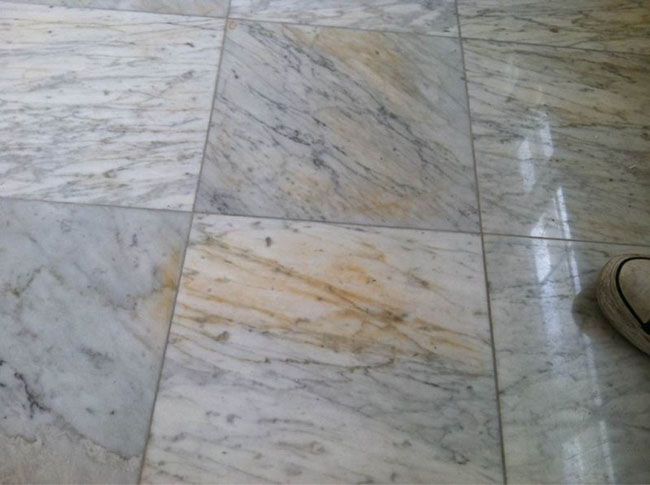
Oil-based stains
You can get oil on your marble floor from a variety of sources, such as stepping in engine oil, spilling cooking oil, or dropping your lipstick. Oily stains are usually dull, dark splotches in your marble that permeate deep into the stone. To remove them, you need to draw them out.
Use a dilute solution of dish soap to break up fresh spills and prevent them damaging your marble, and cornstarch to absorb as much oil as you can from both clean and established stains. To break down really tough stains, use hydrogen peroxide on light marble, or acetone for dark marble. After cleaning the stain, always flush the area with water and dry it with a soft towel.
Ink stains
Ink is tough to get out of any material. The moment you spill ink on your marble floor, act immediately to blot up the excess, then wash with diluted dish soap to break up the dye. Apply a cloth soaked with rubbing alcohol to the area to further break down and absorb the ink, and use diluted ammonia to remove the last of the stain.
Organic stains
If your dog pees on the marble floor, or your kids spill a glass of OJ, don’t panic. Blot up as much of the stain as you can as soon as possible. Don’t rub the stain, you’ll only spread it or force it into the stone. Use hydrogen peroxide or a dilute solution of ammonia to break up and remove organic stains.
Biological stains
If you’ve got potted plants on your marble floor, or an indoor water feature, you might notice algae, lichens, mosses, and other greenery growing where they aren’t wanted. Plants can stain your marble so carefully remove them and clean the area with a diluted hydrogen peroxide solution or acetone to break down the biological matter and prevent more from growing. Also take steps to protect your floor by moving plants and lowering humidity in the area where your green invaders were growing.
Metallic stains
Because marble is made from lots of different elements, some marbles contain metals that can cause stains to appear on the surface of your floor. Iron, copper, and bronze are all found in marble and can stain if they get wet. Look for reddish brown or green patches to identify them.
Unfortunately because the stains come from within the marble, they can be incredibly difficult to remove. Try using a poultice made of baking soda and ammonia, but don’t expect miracles.
Water spots and filmy residue
The most common marks you’ll see on your marble floor are watermarks or cleaning solution streaks. The best way to remove them is to buff the surface with a soft, dry cloth such as a chamois. Use a circular motion and you’ll have your floor gleaming again in no time.
How to make and use a poultice for cleaning marble
Knowing how to whip up a quick cleaning poultice is a handy trick for anyone. This poultice is safe for use removing stains on most surfaces, although you should always test a spot first to check for discoloration.
A poultice is simply a cleaning paste that can be spread onto a stained area and left to dry. Depending on the poultice ingredients and the stain, it can work by drawing the stain out of the marble, or breaking it down.
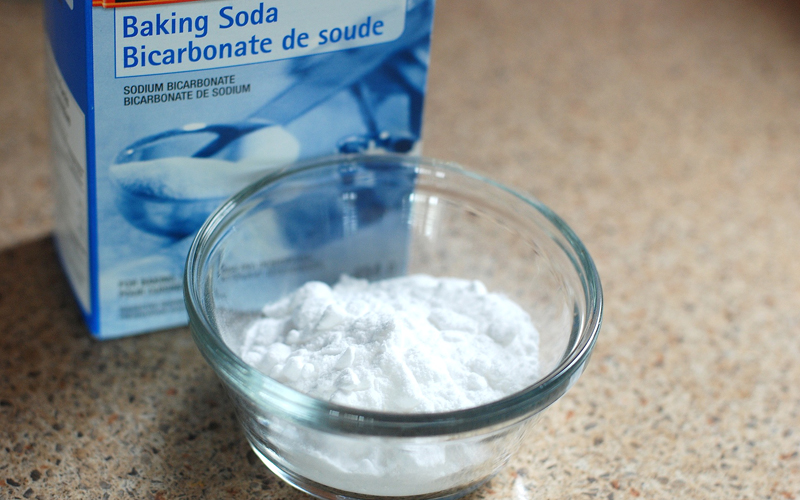
Make a basic poultice by combining baking soda with water, hydrogen peroxide, or ammonia, until it forms the consistency of peanut butter. You will need about 1 pound of baking soda for every square foot of stain, and it will require about a cup of solvent to reach the right consistency, but the mixture can be scaled up/down to suit your needs.
Clean as much of the initial stain as possible, and then cover the area in a thin layer of water. This will help the poultice penetrate the marble and really get to work on the stain. Apply the poultice, covering the stain to the depth of quarter to half an inch, and spread an inch beyond the edges of the stain.
Cover the poultice with plastic wrapping, tape down with masking tape for extra security, and leave it until it’s completely hardened (about 2 days).
Once the poultice has completely dried, remove the protective wrapping and add half a cup of water to dampen it again. Remove it carefully, using a plastic or wooden spatula if necessary. Clean the surface underneath with plenty of water and dry with a soft towel.
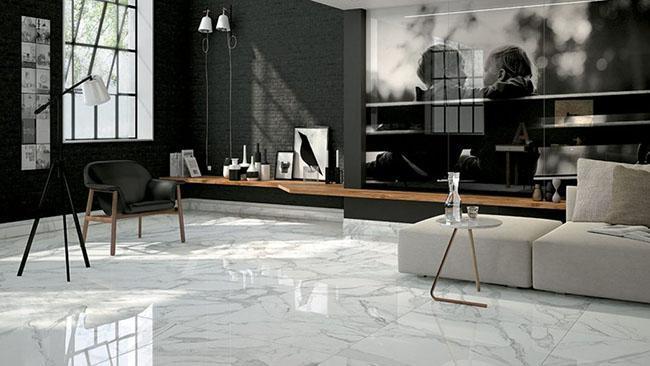
Conclusion
Marble can be tricky to clean, but by following our tips and being careful about the solutions you use, you can keep your marble floors clean and protected for years, without spending a fortune on expensive cleaners and materials.